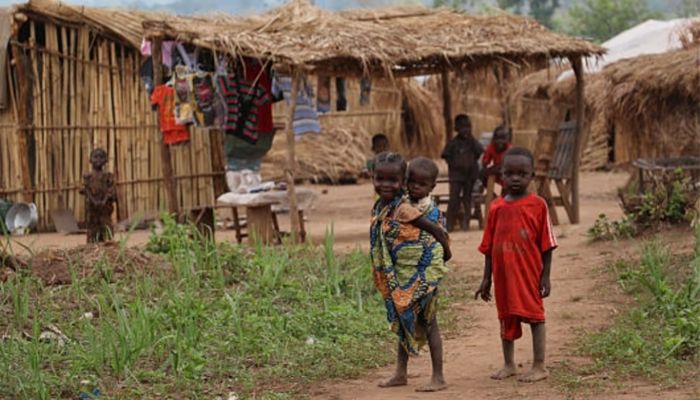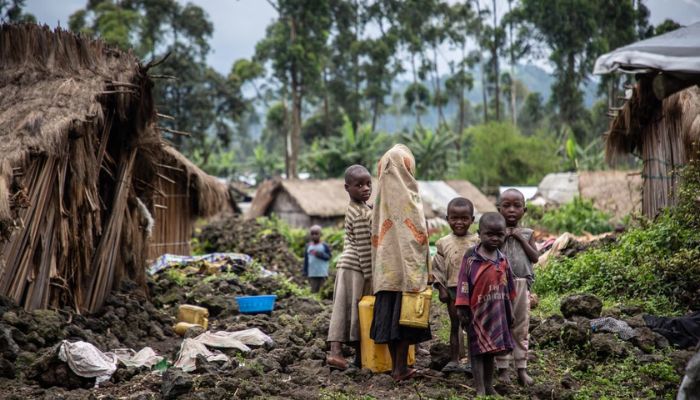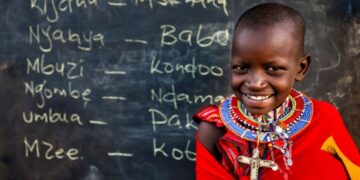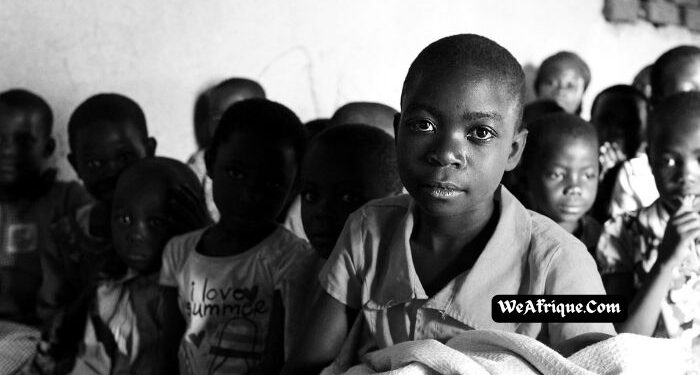The poorest country in Africa is determined through its gross domestic product (GDP) and how much of its population is living above or below the poverty line. This could be a result of several factors, including corruption, insecurity, political instability, and poor infrastructure.
So you might be thinking which country has the lowest GDP per capita and is considered the poorest country in the poorest continent? Stay with us while we list and discuss the top 10 poorest countries in Africa.
10 Poorest African Countries
1. Burundi
Burundi is a small landlocked country in East Africa. It is bordered by Rwanda, Tanzania, and the Republic of Congo. It was ruled by the Europeans alongside Rwanda, as Rwanda-Urundi until 1966 when it became a republic.
With a population of over 11 million and an economic growth rate of 3.21, Burundi is the poorest country in Africa. The GDP per capita of this poor country is $236.80 and it has a poverty rate of 65 percent. This means that over half of its population needs humanitarian aid and support.
This small country has experienced a series of political instability and 2 civil wars, which left scores dead. This insecurity has caused the economy of this country to suffer, making it the poorest country in Africa. This unenviable title has led to a high rate of malnutrition among Burundian children.
2. Somalia
This country located in the horn of Africa is considered the second poorest country in Africa. It is bordered by Ethiopia, Djibouti, Kenya, and the Indian Ocean. With a population of over about 15 million, Somalia has been described as Africa’s most culturally homogeneous country.
This African country has a GDP per capita of $445.78 and stands as the second poorest country in the continent.
Having suffered years of civil war, Somalia has been declared a failed state because of the lack of a central authority. The citizens of this country do not have a functional government, hence, no infrastructure or economic growth. It has an unemployment rate of about 67 percent with over half of its population living in abject poverty.
The weather also doesn’t help in the predicaments of the Somali as they continually experience drought, which makes matters worse.
3. Mozambique
With a GDP per capita of $500.44, Mozambique is one of the poorest countries in Africa. This African country is located in southeastern Africa and is bordered by the Indian Ocean, Tanzania, Malawi, Zambia, Eswatini, and South Africa.
Mozambique is the 35th largest country in the world with a land mass of 801,590 km square, and a population of over 31 million. This African country despite its abundance of natural resources is still considered one of the continent’s poorest countries, with about 41 percent of its population living in poverty.
The economy of Mozambique was crippled due to the insecurities and civil war which lasted for 15 years. Despite ending in 1992, its effects are still felt in the nation and its economy. Other problems of this country include political instability, corruption, and disruptive climatic conditions due to its proximity to the ocean.
4. Central African Republic

This is a landlocked country in Central Africa. It is bordered by Chad, Sudan, DR Congo, South Sudan, and Cameroon. The CAR covers a land area of 622,984 km square which houses it 4.92 million population.
This African country has suffered from a series of autocratic and corrupt leadership. It has also survived an attempt at monarchy by one of its past leaders, who declared the country and empire and himself, the emperor. While that was unsuccessful and lasted just a little while, the country has been continually plagued with leadership tussles that have resulted in civil wars. The wars were often characterized by human rights abuses.
The Central Africa Republic is considered one of the poorest countries in the African continent with a GDP per capita of $511.48, despite its acclaimed diamond trade which has added little to no financial value and has not improved the quality of life of its citizens. About 60 percent of this country’s population lives under the poverty line.
In 2019, his country had the second-lowest Human Development Index and the lowest inequality-adjusted Human Development Index. It is said to be the unhealthiest country and the worst country for young people.
5. Madagascar
This East African country is the largest island country in Africa and the second-largest in the world, after Indonesia. It is located in the Indian Ocean and is home to about 30 million inhabitants. It is considered one of the most ecologically diverse places on earth due to its beautiful landscape.
This island country’s economy relies heavily on trading and agriculture. The latter however can be affected by weather changes and disasters.
With a GDP per capita of $514.11, Madagascar is one of the countries with the lowest standards of living. This is owed largely due to the political instability and violent coups it has experienced over the years. Approximately 69 percent of its inhabitants live below the poverty line and almost one in every 2 children under the age of 5 is malnourished. It is said that the country has been experiencing famine due to climate change.
However, the economy of Madagascar has taken a turn for the good after the government made its infrastructural development and poverty reduction its top priorities. At the time of this writing, Madagascar is one of Africa’s poorest countries.
6. Sierra Leone
With a GDP per capita of $515.93, Sierra Leone is considered one of the poorest countries on the African continent. This West African country is bordered by Liberia and Guinea. Its 8 million population is housed by a landmass of 17,740 km square.
Sierra Leone records a high rate of unemployment, corruption, and bad governance which has caused it to be mentioned in this list. This country has been on the list for a very long time, possibly, since its independence in 1961.
Its economy has been overly dependent on mineral exploitations and it is believed that the country has enough diamonds and gold to be sufficient to bring in foreign investment and earnings in foreign currencies. However, this seems not to be the case as the country is still impoverished with over half of its population living beneath the poverty line.
Due to the lack of social and basic amenities, this country has a high mortality rate and an even higher maternal mortality rate. About 40% of its adult population are illiterates with little to no education.
7. Democratic Republic of Congo

This country is the most populous Francophone country outside France, with a population of over 108 million French-speaking natives. Its 2,345,409 km square land area is bordered by South Sudan, Uganda, Rwanda, Burundi, Tanzania, Zambia, Angola, and the South Atlantic Ocean.
This African country is considered the second largest country on the African continent and the 11th largest in the world. It is blessed with natural resources that could easily make it one of the richest countries in the world if properly managed, yet it’s one of the poorest. The untapped deposits of minerals in the Congolese soil have been estimated to be in trillions of dollars.
This is a clear case of poor leadership and corruption which has caused over 64 percent of its population to struggle under the poverty line. In years to come, it is speculated that if put into proper use, the minerals of this country might take it out of its impoverished state.
8. Niger
The Republic of Niger is a landlocked country in West Africa. It is bordered by Libya, Nigeria, Chad, Benin, Burkina Faso, Mali, and Algeria. It has a landmass of about 1,270,000 km square which houses over 24 million inhabitants. Niger is the second-largest landlocked country in Africa.
In 2020, the World Bank estimates Niger’s poverty rate to be 44.1 percent which is due to different factors including political instability, drought, and food insecurity. It has a GDP per capita of $594.
Having 80 percent of its land area being the desert is a huge problem for this West African country as its inhabitants feed on small-scale farming. Sadly this country is under the threat of turning into a desert due to climate change.
The lack of infrastructural development in this country has caused it to suffer from high fertility rates, which has led to overpopulation, poor health care, poor educational services, and environmental degradation.
9. Eritrea
This country is located in the horn of Africa. It is bordered by Ethiopia, South Sudan, and Djibouti. Parts of Eritrea have an extensive coastline along the Red Sea. Its 117,000 km square landmass includes the Dahlak Archipelago and other Hanish Islands.
With a GDP per capita of $642.66, over 60 percent of this country’s population lives in extreme poverty. Its impoverished state can be associated with the wars that have been experienced by the country. Similarly, like other African countries, this country has experienced a series of bad leadership, which has further crippled its economy. Over 20 percent of Eritrean children are out of school.
Other factors that have contributed to the poor state of this country are drought which has affected the agricultural sector, has led to famine, and lack of access to safe water. In recent times, there is a high rate of migration from the country. This is owed largely to the impoverished state of Eritrea.
See Also: Every African Country, Capital, How It Got Its Name, Most Spoken Language
10. Malawi
With a GDP per capita of $642.66, Malawi is the 10th poorest country in Africa. Located in East Africa, Malawi is a landlocked country bordered by Zambia, Tanzania, and Mozambique. Formerly known as Nyasaland, this East African country has a landmass of over 118,484 km square.
Malawi is not only one of the smallest countries, but also one of the poorest. The economy of this country is dependent on rain-fed agriculture. This has worked against the development of the country because of climate change.
Unlike the other countries on this list, Malawi has been relatively peaceful since gaining independence in 1964.
Its impoverished state has led to low life expectancy and high infant mortality. Similarly, the rate of HIV/AIDS in this country is extremely high and has led to a reduction in labor and an increase in the government’s expenditure.




















